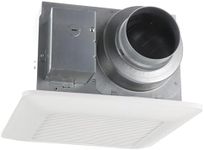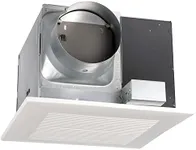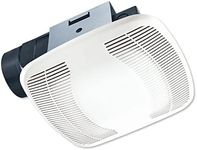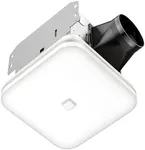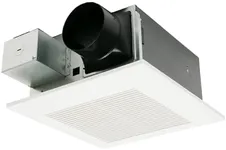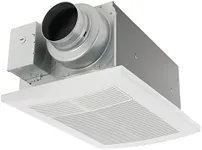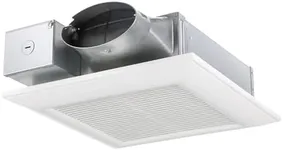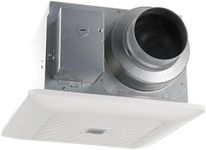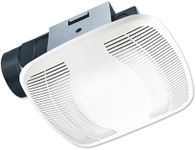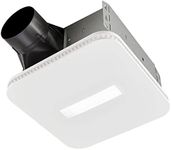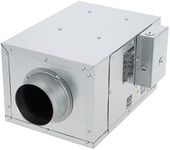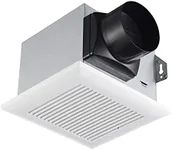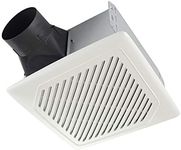Buying Guide for the Best Bathroom Fans
Choosing the right bathroom fan is important for keeping your bathroom fresh, preventing mold, and protecting your walls and fixtures from moisture damage. A good fan will remove humid air quickly and quietly, making your bathroom a more comfortable and healthier space. When shopping for a bathroom fan, it's important to understand the key features and how they relate to your specific needs and bathroom size.Airflow (CFM)Airflow, measured in Cubic Feet per Minute (CFM), tells you how much air the fan can move in a minute. This is important because it determines how effectively the fan can remove moisture and odors from your bathroom. Smaller bathrooms usually need a fan with a lower CFM, while larger bathrooms or those with a shower or tub need a higher CFM. As a general guide, you can estimate about 1 CFM per square foot of bathroom space. For example, a 50 CFM fan is suitable for a small half-bath, while a 100 CFM or higher fan is better for a large master bathroom. To pick the right CFM, measure your bathroom and match the fan's airflow to your room size.
Noise Level (Sones)Noise level is measured in sones, which tells you how loud the fan will be when running. This is important if you want a peaceful bathroom experience, especially if the bathroom is near bedrooms or living areas. Fans with a lower sone rating (1.5 sones or less) are very quiet, while those with higher ratings (over 4 sones) can be quite noisy. If you value a quiet environment, look for fans with a low sone rating. If noise is not a concern, you can consider fans with higher sones, which are often less expensive.
Installation TypeBathroom fans can be installed in the ceiling or wall, and some are designed for easy replacement of existing fans. This is important because the installation type must match your bathroom's layout and your home's construction. Ceiling-mounted fans are most common and are best for venting air upwards and out through the roof or attic. Wall-mounted fans are useful if ceiling installation is difficult or if you need to vent directly outside. Choose the installation type that fits your bathroom's structure and your ability to access the venting path.
Additional FeaturesSome bathroom fans come with extra features like built-in lights, humidity sensors, or heaters. These features can add convenience and comfort. For example, a fan with a light can replace an existing light fixture, while a humidity sensor can automatically turn the fan on when moisture levels rise. A built-in heater can make the bathroom more comfortable in colder months. Consider which features would make your bathroom experience better and choose a fan that includes them if they match your needs.
Energy EfficiencyEnergy efficiency refers to how much electricity the fan uses to do its job. This is important for saving on energy bills and reducing your environmental impact. Some fans are certified as energy efficient and use less power while still providing good airflow. If you want to save energy, look for fans with energy efficiency certifications or those that advertise low power consumption. This is especially useful if your fan will run frequently or for long periods.
